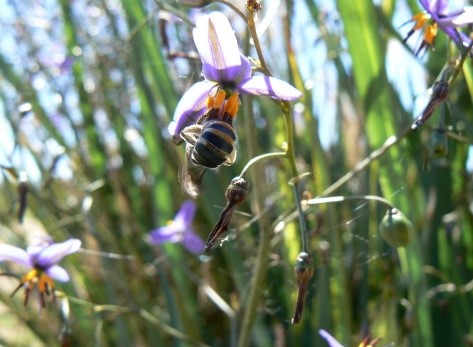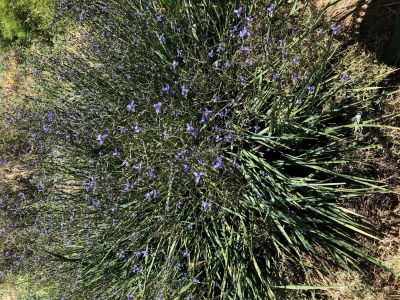Flora in Focus - Nidbul or Spreading Flax-lily
NRM NEWS – November 2020 – TERRESTRIAL ECOSYSTEMS
By Sue Logie
Senior Land Services Officer P: 03 5881 9936 | M: 0427 352 117 | E: sue.logie@lls.nsw.gov.au

Spreading Flax-Lily (Dianella revoluta)
Dianella revoluta, commonly called black anther flax-lily, spreading flax-lily, Nidbul (Wiradjuri name) is widely distributed in the Murray region.
Dianella is an erect, hairless perennial herb and grows to a height of 1 m and is long-lived. It forms clumps and grows from rhizomes underground.
Nidbul is an important plant for Aboriginal people who use its leathery, strong leaves to weave baskets and make string. The sweet purple berries of Nidbul are used as a food resource by Aboriginal people. Spreading Flax-lily is also used in Aboriginal medicine, where both the root and leaf were used in a tea to remedy colds and headaches.
This species flowers from spring to summer and has deep blue to purple flowers. The flowers stalks rise on wiry stems from the foliage, with one flower a day opening to prolong flowering time. The fruit is blue to purple and usually round. The flowers provide habitat and food for native insects and animals, including native bees and the endangered Superb Parrot.
It is drought and frost resistant, and decorative with its compact, clumping and evergreen foliage. It is suitable for most soils but prefers well-drained soil. Propagation can be from seed collected by hand and sown in spring or by the division of rhizomes during the colder months in late winter.
